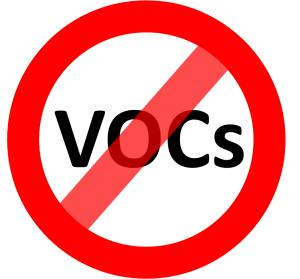In Part One of our series, we presented a basic definition of Volatile Organic Compounds (VOCs). For the next part of our series, we will further define VOCs, as well as discuss why VOC content in a coating is something end-users and coatings installers need to be aware of.
Many in the coatings industry are at least vaguely familiar with the term VOC. The acronym VOC stands for Volatile Organic Compound. Let’s break that down a bit. Volatile means that the material will evaporate naturally into the atmosphere given an open, uncovered environment. Organic means that the material contains a carbon atom. Anything that contains carbon within its structure is, by definition, organic. Gasoline, for example, is an organic material because it is a hydrocarbon. Organic materials are either directly or indirectly derived from living or once living things. Compound, for simplicity sake in this context means “material”.
So, a coating’s VOC content is the amount of volatile organic material (usually a solvent) that evaporates into the air. Why is this important? In most cases, VOCs contained within a coatings formulation evaporate and combine with airborne molecules. In the presence of sunlight, lower level ozone commonly referred to as “smog” is formed. Smog is a respiratory irritant and is also harmful to many forms of plant life.
There are indeed VOCs which exist that scientists have determined DO NOT contribute to lower level ozone. These are classified as EXEMPT VOCs. To be brief, most halogenated solvents are exempt. Halogenated meaning they contain elements of fluorine, chlorine, and bromine. There is currently a list of about 50 exempt materials; however, only a select few are even marginally practical for use as solvents in industrial coatings formulations. The common few include Acetone, Methylacetate, Tertiary Butyl Acetate (TBAC), and Parachlorobenzotriflouride, (PCBTF).
As indicated above, the reduction of VOC content is certainly beneficial to the overall environment. Formulating coatings either free of VOCs or with exempt materials present many challenges. Part Three of our blog series will focus on some of the practical challenges and perceptions encountered by the coatings formulator and applicator.
Protective Industrial Polymers manufactures a number of VOC-compliant polymer floor coatings for use in areas where VOC content is stringently regulated. To learn more, please visit www.protectpoly.com.


